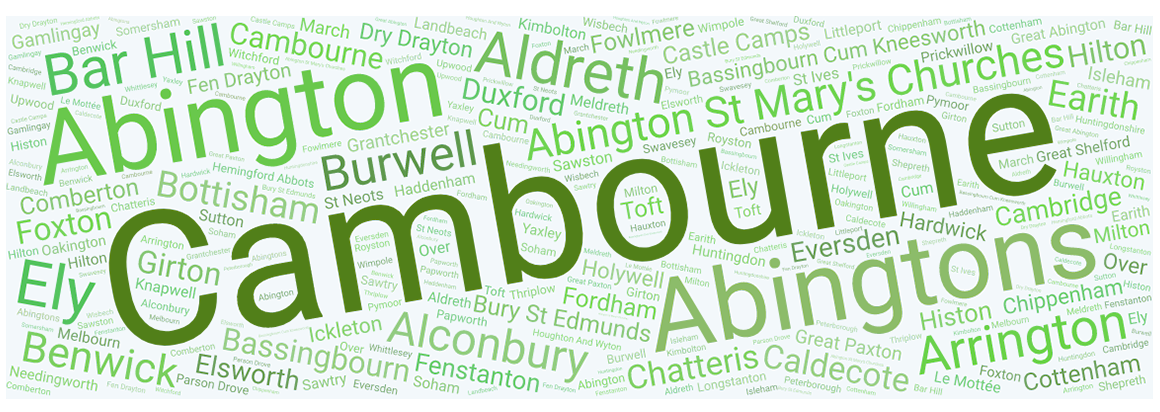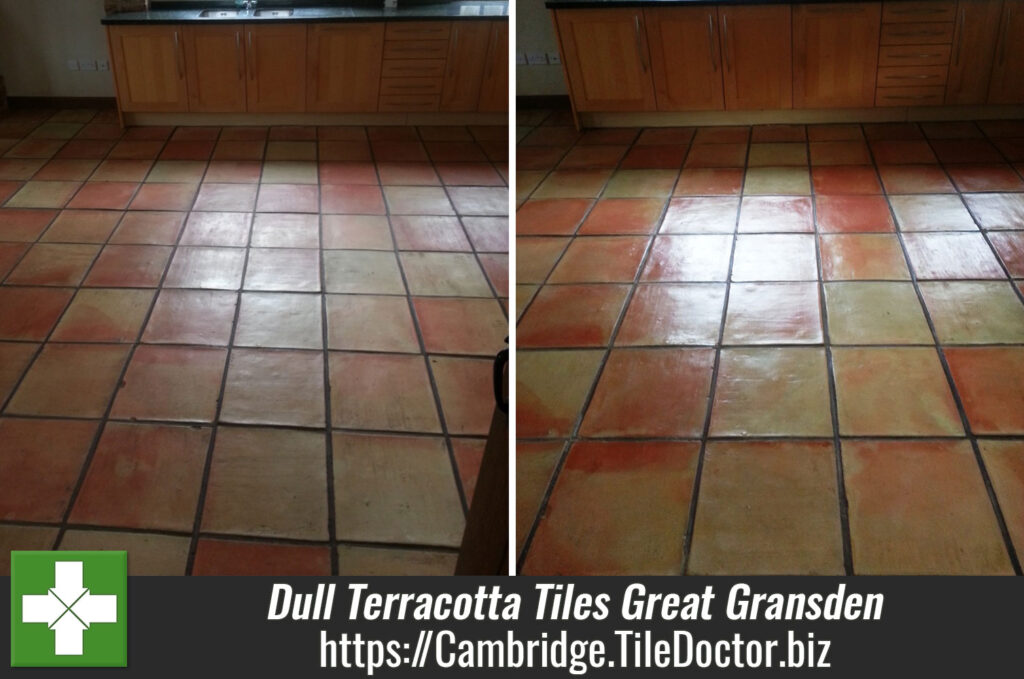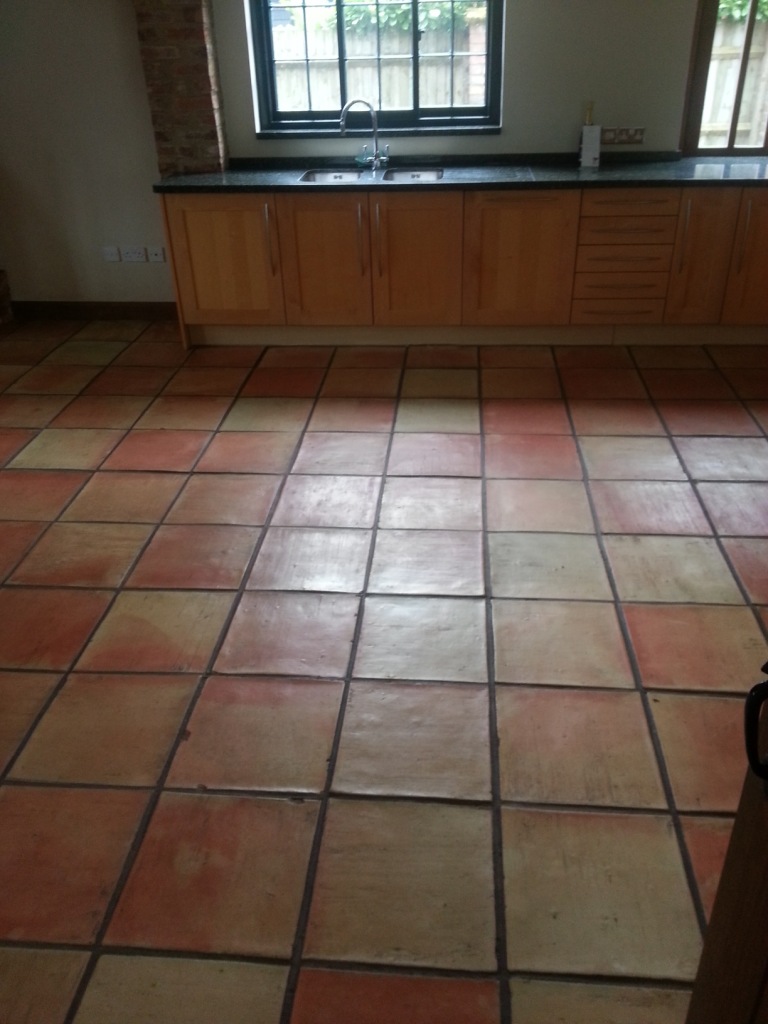Restoring a Salt Satined Quarry Tiled Floor in Gamlingay
This quarry tiled floor in the village of Gamlingay had been subject to efflorescence salt staining over many years. This problem typically occurs in older houses where the floor has been laid without a damp-proof membrane allowing moisture to rise through the tile bringing with it salts from the sub floor. Gamlingay is located in South Cambridgeshire, near the border with Bedfordshire, is an ancient village which features in the Domesday Book. Not surprisingly a lot of the property here is quite old and includes sixty listed buildings.
 |
 |
Before the current owner moved in the property had been left dormant and empty with no heating which hadn’t helped the condition of the floor amongst other things. The white efflorescent salt staining was now very evident on the Quarry tiles and had caused a lot of damage to the surface of the floor. I discussed with the client how we could help and carried out a test clean. They were happy with the result and we agreed our quote to renovate the floor. We arranged to return later in the month.
Renovating a Salt Damaged Quarry Tiled Hallway Floor
The cleaning began with the application of Tile Doctor Remove and Go which was sprayed onto the tile and left to soak in for about ten minutes. The tiles were then scrubbed with a very coarse 200-grit diamond pad fitted to a rotary machine. The soil was then extracted using our van mounted hot water extraction system which makes light work of rinsing the floor and keeps the mess to a minimum. The combination of Tile Doctor Remove and Go and the coarse pad cleaned and resurfaced the tile improving the appearance of the floor and once the soil was removed you could really see the transformation.
We finished the cleaning process by giving the whole floor an acid wash using Tile Doctor Acid Gel. The acid dissolves the alkaline salt still present in the floor and removes any grout haze still present on the tile. Once this had been scrubbed in it was rinse off and extracted using the hot water extraction system as before. The floor was then left to dry out which due to the lack of damp-proof membrane was expected to lake longer than usual, so we decided to leave the floor a few days.
Sealing an Old Quarry Tiled Hallway Floor
We returned on a nice sunny day and first tested the floor with our damp-proof meter. This just tests the moisture levels in the floor to check they are to an acceptable level. If the floor is not dry the seal will not cure properly, and the process would be a waste. In this case the readings were fine, and I was happy the floor was dry enough to be sealed.
The client had requested the floor have a low sheen appearance and they didn’t want it to look too shiny. Given the floors history with Efflorescence however I needed to choose a sealer that would give the desired appearance but was also breathable to allow for moisture to rise through the tile. Trapping moisture under the tile with a non-breathable sealer can result in moisture spreading to the walls leading to rising damp.
On this occasion I opted to go with the application of Seal and Go extra which is breathable and leaves a subtle sheen appearance. The acid wash we gave the tiles should neutralise the alkaline salts and now the house was occupied the damp issues which had led to them occurring in the first place are less likely. I applied six coats of sealer, allowing each one to dry before applying the next.
 |
 |
As you can see from the pictures, the work made a dramatic difference to the floor and my client was delighted with the transformation.

Professional Restoration of a Quarry Tiled Hallway in Cambridgeshire
Restoring a Salt Satined Quarry Tiled Floor in Gamlingay Read More »












